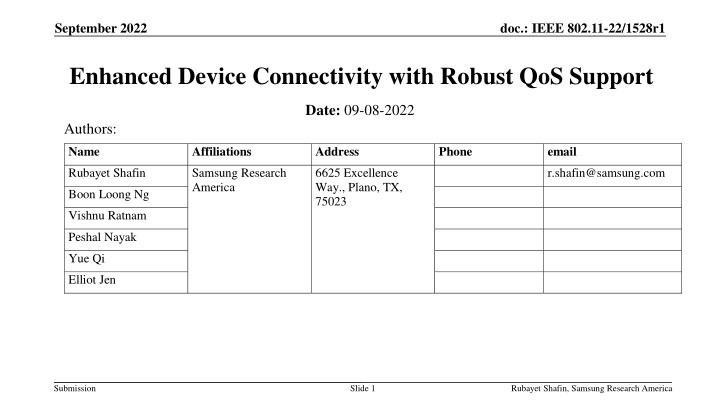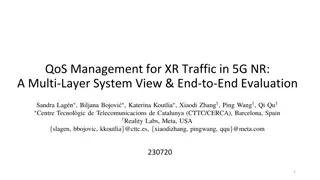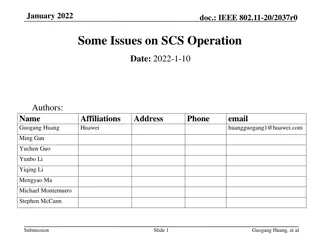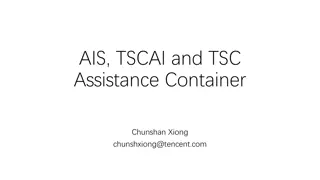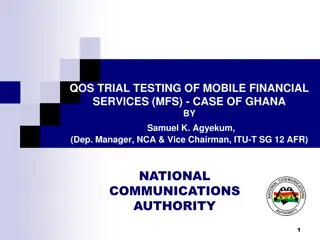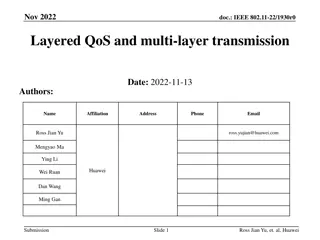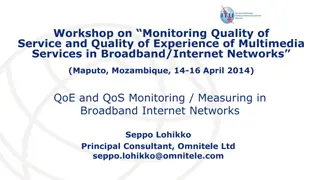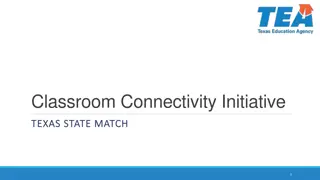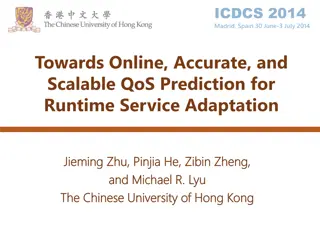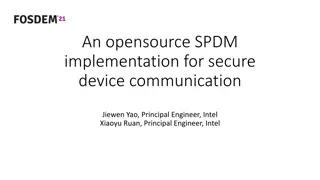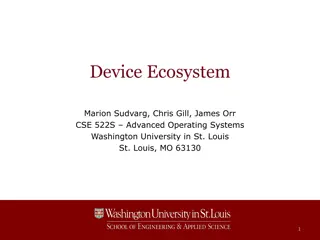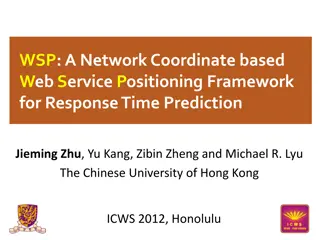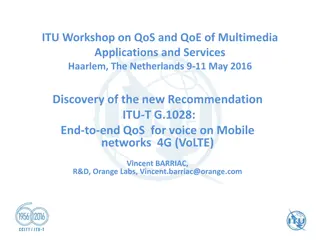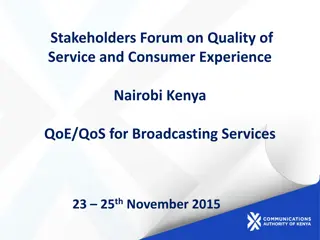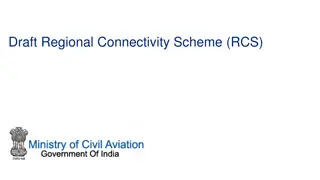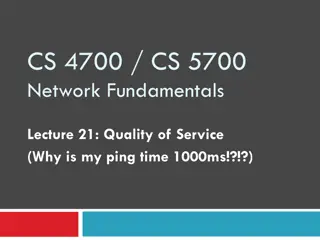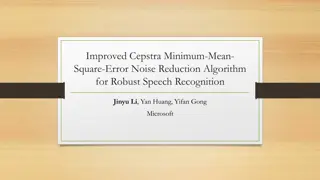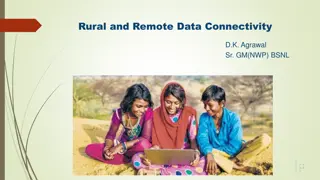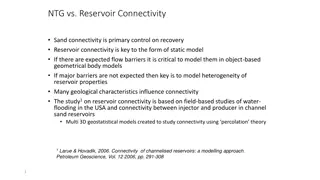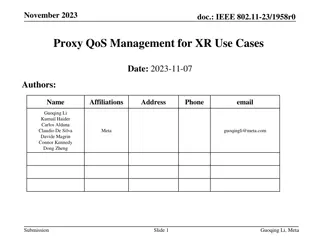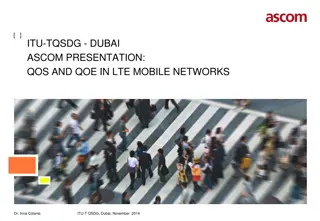Enhanced Device Connectivity with Robust QoS Support
The document discusses technologies for improved device connectivity in future Wi-Fi networks with diverse traffic types and Quality of Service (QoS) requirements, focusing on discovery and setup of P2P links and better traffic management for enhanced overall network performance.
Download Presentation

Please find below an Image/Link to download the presentation.
The content on the website is provided AS IS for your information and personal use only. It may not be sold, licensed, or shared on other websites without obtaining consent from the author.If you encounter any issues during the download, it is possible that the publisher has removed the file from their server.
You are allowed to download the files provided on this website for personal or commercial use, subject to the condition that they are used lawfully. All files are the property of their respective owners.
The content on the website is provided AS IS for your information and personal use only. It may not be sold, licensed, or shared on other websites without obtaining consent from the author.
E N D
Presentation Transcript
September 2022 doc.: IEEE 802.11-22/1528r1 Enhanced Device Connectivity with Robust QoS Support Date: 09-08-2022 Authors: Name Affiliations Address Phone email Rubayet Shafin Samsung Research America 6625 Excellence Way., Plano, TX, 75023 r.shafin@samsung.com Boon Loong Ng Vishnu Ratnam Peshal Nayak Yue Qi Elliot Jen Submission Slide 1 Rubayet Shafin, Samsung Research America
September 2022 doc.: IEEE 802.11-22/1528r1 Abstract With the proliferation of IoT devices, wearables, AR/VR applications, future Wi-Fi networks need to support a large number of devices with varying traffic types both P2P and UL/DL, and QoS requirements [1] In this contribution, we highlight some of the potential enabling technologies that provide improved and scalable device connectivity with the needed QoS support. Submission Slide 2 Rubayet Shafin, Samsung Research America
September 2022 doc.: IEEE 802.11-22/1528r1 Discovery and Setup of P2P Links Improvement on Discovery: TDLS discovery is a time consuming process A client device may have a large number of P2P applications/requirements Sequential discovery does not scale well as the number of peer devices in the network grows The device may want to discover all the peer devices fast Faster setup: If the device has previously set up with any of the discovered peer STAs, the next setup between these two peer STAs should be faster by utilizing previously shared information Submission Slide 3 Rubayet Shafin, Samsung Research America
September 2022 doc.: IEEE 802.11-22/1528r1 Better Traffic Management (1) AP-MLD A STA or non-AP MLD can have diverse P2P peers Peers can have different MLD capabilities, e.g., number of links and operating frequencies Peers can be operating on different operating constraints, e.g. NSTR/STR Peers can be on different operating modes, e.g., EMLSR, EMLMR, STR Peers can have different latency requirements or different priority levels 5 6 GHz 2.4 Off-channel TDLS 2.4 GHz The non-AP MLD, in coordination with AP-MLD, should be able to better manage this diverse peers and varying traffic characteristics including multi-link management T2LM can take into account both UL/DL and P2P 6 GHz TDLS Base channel Submission Slide 4 Rubayet Shafin, Samsung Research America
September 2022 doc.: IEEE 802.11-22/1528r1 Better Traffic Management (2) A non-AP MLD can have latency-sensitive traffic requirements for one or more of its peer non-AP MLD(s) The non-AP MLD should be able to utilize existing AP-to- STA low-latency traffic management mechanism (e.g. R- TWT) for P2P communication with tighter coordination with the AP MLD P2P requirement-aware resource provisioning by AP-MLD The AP-MLD has the overall network state information, some of which is useful to share with the non-AP-MLD in supporting client s P2P (and UL/DL) traffic management. For example, AP MLD may share channel occupancy information that the non-AP MLD can use for selecting P2P channel. Client can provide additional information to support AP MLD s provisioning. For example, STAs can share buffer status corresponding to P2P traffic. Alternative, STAs can indicate to the AP MLD how much resource it would need for P2P communication. The AP MLD can judge how much resource to allocate for the non-AP MLD s P2P requirements. AP-MLD 5 6 GHz 2.4 Submission Slide 5 Rubayet Shafin, Samsung Research America
September 2022 doc.: IEEE 802.11-22/1528r1 Improved Energy Efficiency Power consumption has always been an important issue for P2P devices Non-AP MLD s P2P power saving schedule should be established in coordination with the AP MLD P2P links may often have predictable traffic pattern The AP s resource provisioning to the STA for enabling P2P communication should follow a schedule The STA s power saving schedule over P2P link should coordinate with the AP s P2P resource allocation schedule This way peer STAs energy efficiency can be improved Harmonizing power saving schedules Option-1: Peer STAs first set up a PS schedule between them, and let AP know about the P2P schedule; or vice versa Option-2: Peer STAs follow some common schedule with the AP that enables P2P communication Submission Slide 6 Rubayet Shafin, Samsung Research America
September 2022 doc.: IEEE 802.11-22/1528r1 Summary Next generation Wi-Fi network should-- Improve network manageability that can scale with the number of devices or links Reduce cross-link interference/collision & improve network level spectrum utilization & QoS assurance through tighter coordination between AP and STAs (including P2P) Achieve latency reduction and low power operation Submission Slide 7 Rubayet Shafin, Samsung Research America
September 2022 doc.: IEEE 802.11-22/1528r1 References [1] IEEE 802.11-22/932r0, Thoughts on Beyond 802.11be , June 2021 Submission Slide 8 Rubayet Shafin, Samsung Research America
